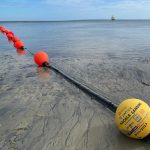BT Advert Banned for Misleading “UK’s most powerful Wi-Fi” Claim
A complaint by UK cable ISP Virgin Media has resulted in the Advertising Standards Authority (ASA) banning a couple of BT adverts after they misleadingly claimed their Smart Hub broadband router could deliver the “UK’s most powerful Wi-Fi vs. major broadband providers.” It’s not the first time that’s happened.
Back in 2017 several ISPs moaned to the ASA after BT used actor Ryan Reynolds to support “misleading” claims of being able to offer the “UK’s most powerful wi-fi signal” and “better wi-fi coverage” (here). By comparison the “new” adverts for their residential and business broadband services (run during May 2018) were supported by additional testing and the “vs. major broadband providers” caveat.
In fairness BT did a reasonable job on the wireless speed testing side of things, which was carried out in their own test house. Nevertheless the ASA today noted that there were other forms of non-Wi-Fi interference common in many households, beyond Bluetooth, for which BT had not tested.
Advertisement
Frustratingly the ASA has not been specific about which forms of interference they now expect ISPs to factor when testing the WiFi performance of their routers, which would have been helpful when ruling on such a topic. Equally there’s the slight irony that Virgin Media’s own Hub 3.0 router is well known to be a worse performer than BT’s Smart Hub for WiFi, but that’s another debate.
We noted BT had tested for both Wi-Fi and Bluetooth interference. However, there were other forms of non-Wi-Fi interference common in many households beyond Bluetooth for which BT had not tested. We were therefore concerned that the tests did not fully reflect everyday real household conditions by not including those other forms of non-Wi-Fi interference. Furthermore, no recording of the levels of interference at the time each router was tested had been provided, meaning that we were unable to verify that all the routers tested were subjected to consistent levels of interference.
In relation to ad (b), the testing carried out on the business routers had been conducted in laboratory test houses and a variety of real-world business settings. However, it appeared that the laboratory tests did not test for all forms of non-Wi-Fi interference that would be common in many business environments. Although the different types of Wi-Fi and non-Wi-Fi interference that business customers would experience would invariably be present in the real-world tests, we were concerned that there were no recordings of the levels of interference at the time each router was tested. Therefore, if there was transitory interference during the testing, it would not be clear which devices could have been impacted and if there was an even impact across devices and test scenarios.
Because BT did not test for all significant forms of non-Wi-Fi interference and because they did not provide recordings of the levels of interference when each router was tested, we concluded that the claim “UK’s most powerful Wi-Fi vs. major broadband providers” in ad (a) and “UK’s most powerful business Wi-Fi signal vs. major broadband providers” in ad (b) had not been substantiated and were therefore misleading.
As usual the ASA banned the advert (largely symbolic since it’s run ended ages ago) and called on BT “not to claim that their routers were ‘the UK’s most powerful’” unless they could “demonstrate that they could provide a stronger signal than other major providers when subjected to other forms of non-Wi-Fi interference, and unless they could provide recordings of the levels of all types of interference when each router was tested to demonstrate that each router was subjected to consistent levels of interference.”
The “all types of interference” proviso may present some interesting challenges for BT and other ISPs, although in fairness it would probably be best if all providers just avoided making any overly bold claims about WiFi performance. Such routers are highly variable in their speeds due to many different factors. In the meantime you can check out BT’s most recent batch of November 2018 testing (here).
Mark is a professional technology writer, IT consultant and computer engineer from Dorset (England), he also founded ISPreview in 1999 and enjoys analysing the latest telecoms and broadband developments. Find me on X (Twitter), Mastodon, Facebook, BlueSky, Threads.net and Linkedin.
« FirstGroup and Blu Wireless to Upgrade UK Trains with 5G Broadband
















































Comments are closed